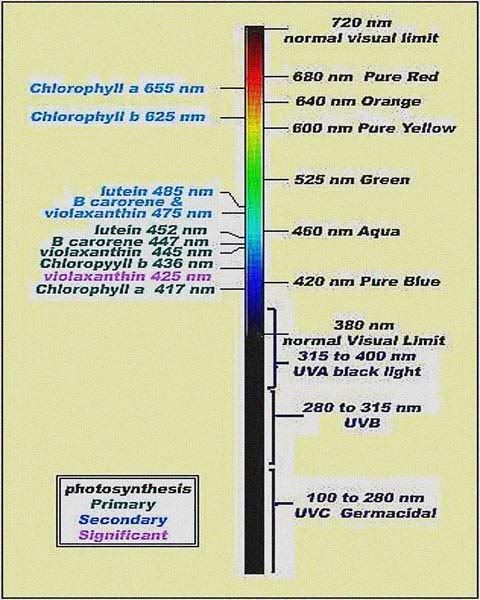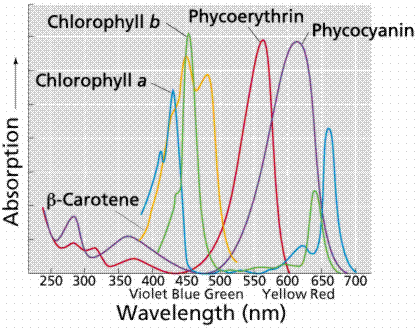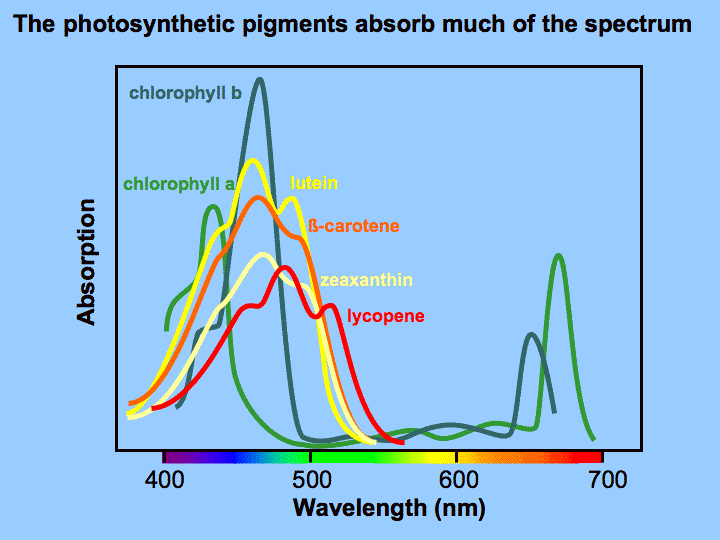I used the AI sol blues for 1 year on a mixed reef( softy/LPS) and swithched back to t5. After 13 years of growing corals i noticed a big PAUSE in growth..color and overall health. I switched back and within a month colonies that were doing poorly all bounced back, just my experience and in no way condeming LED'S.... t5 just works better for me.
You are using an out of date browser. It may not display this or other websites correctly.
You should upgrade or use an alternative browser.
You should upgrade or use an alternative browser.
taking a break from LED
- Thread starter dz6t
- Start date
Has anybody read about the experiment Vivid Aquariums performed?
They used Ecotech Radion LED modules because the individual color channels were controllable, and they felt this was the best unit, except there is no UV channel.
If anyone has used the Ecotech Radion LED modules, I'd be happy to hear about it.
Matt
They used Ecotech Radion LED modules because the individual color channels were controllable, and they felt this was the best unit, except there is no UV channel.
If anyone has used the Ecotech Radion LED modules, I'd be happy to hear about it.
Matt
I think it had to do with the AI only having blue/white and royal for colors that caused a shift in the health and colors of my corals. The radion offers green and red and i think it makes a big differnce especially with LPS corals, a friend of mine set the radion up one month ago so i wll be able to see how ot does on his, i have heard alot of good feed back on those units.
I have been running 2 sol blues on a 30 inch 29 gallon mixed reef for about a year and a half
at first I did not see much growth but I also had the max set at 40% a year and a half later Im running them at 80% for the peak lighting period
and I am starting to see more growth not crazy but decent an example is I picked up a single 1 inch branch of german blue digitata last september and now 10 months later there are over 30 branches plus the few that I have broken off messing with the tank. another example is a chalice frag I got around the same time that I have pics of
sept 2011
jan 2012
july 2012
I really dont have much experience with these particular corals as far as what to expect for growth but they are growing
my last reef had MH and VHO and I do feel that I had faster growth but its hard to compare because I also had 4 times the water volume
at first I did not see much growth but I also had the max set at 40% a year and a half later Im running them at 80% for the peak lighting period
and I am starting to see more growth not crazy but decent an example is I picked up a single 1 inch branch of german blue digitata last september and now 10 months later there are over 30 branches plus the few that I have broken off messing with the tank. another example is a chalice frag I got around the same time that I have pics of
sept 2011

jan 2012

july 2012

I really dont have much experience with these particular corals as far as what to expect for growth but they are growing
my last reef had MH and VHO and I do feel that I had faster growth but its hard to compare because I also had 4 times the water volume
Has anybody read about the experiment Vivid Aquariums performed?
They used Ecotech Radion LED modules because the individual color channels were controllable, and they felt this was the best unit, except there is no UV channel.
If anyone has used the Ecotech Radion LED modules, I'd be happy to hear about it.
Matt
What is the result? I can't find any, seems like an ongoing experiment.
I like to keep it green and LED offers this for me also... I am not a fan of the mercury in flourescent tubes for one. I don't like the MH power consumption, the needed quartz glass for protection, and change a $40 bulb every so often. Pain in the butt as far as I am concerned.
I worked in the past for a major lighting division under Phillips as a Design Engineer. They are so focused on LED you would think it is going to save the world. With the growing green trends, and power consumption regulation in the future it has been said there will come a day when we don't know anything but LED lights.
I am no professional in optics, but have worked side by side with some optical engineers... And LED light technology was the "holy grail" as they saw it! If we stick with experimenting the correct spectrums, get the combination and strengths correct, we will have low energy solution, customizable for fun of simulating those red sunset and rises you see, solution.
I think having choices is what makes us American and it is great we have so many options to grow our corals.
In my build thread. http://www.bostonreefers.org/forums/showthread.php?122669-Corner-Tank-Build-54-gallon&highlight=. I will document the PAR readings, complete build specs on the LEDs, and have some growth shots. Hopefully my trial and error will help someone when considering building their own unit.
I worked in the past for a major lighting division under Phillips as a Design Engineer. They are so focused on LED you would think it is going to save the world. With the growing green trends, and power consumption regulation in the future it has been said there will come a day when we don't know anything but LED lights.
I am no professional in optics, but have worked side by side with some optical engineers... And LED light technology was the "holy grail" as they saw it! If we stick with experimenting the correct spectrums, get the combination and strengths correct, we will have low energy solution, customizable for fun of simulating those red sunset and rises you see, solution.
I think having choices is what makes us American and it is great we have so many options to grow our corals.
In my build thread. http://www.bostonreefers.org/forums/showthread.php?122669-Corner-Tank-Build-54-gallon&highlight=. I will document the PAR readings, complete build specs on the LEDs, and have some growth shots. Hopefully my trial and error will help someone when considering building their own unit.
Dong, I think it is ongoing.What is the result? I can't find any, seems like an ongoing experiment.
The reason I am asking these questions about LED experience is because while I have maintained my tanks, I have been "out" of the hobby for about 3 years, not focusing on new technology.
I am long-term planning a larger in-wall setup, and am interested in LEDs as an option to supplement solar tubes.
Matt
This is why I am interested in LED lights as well.I like to keep it green and LED offers this for me also... I am not a fan of the mercury in flourescent tubes for one. I don't like the MH power consumption, the needed quartz glass for protection, and change a $40 bulb every so often. Pain in the butt as far as I am concerned...
Metal Halides work. I presently have two 175W DE bulbs on my 120gal, supplemented by 260W of PCs. But, Metal Halides:
Generate heat that needs to be abated by chilling or A/C.
Need to be replaced every year at $40+ a bulb ad infinitum.
Have perhaps double the power consumption as LEDs.
What I am thinking about for my future in wall setup are solar tubes with LED supplementation or just LEDs. As much as MHs have worked for me, I cringe at the cost and heat for lighting a 30" deep tank.
Matt
PAR values. This is one I don't understand why it holds such weight. Just because the radiation is there, doesn't make it usable. If I put 500 wats of yellow and green light spectrums, I could see PAR values very high. This is no use to my corals that want usable spectrums in the UVA, blue and red areas. Available vs usable radiation.
Ummm, yes. PAR - Photosynthetically Available Radiation. Measured over the entire spectrum of available light. PUR - Photosynthetically Usable Radiation. Those spectrums that are available for the animals/plants you are growing.
If I have 500 LBs of catfood, it doesn't mean that I have food for my infant. Hence, the discussion regarding lack of spectrum in LED.
If I have 500 LBs of catfood, it doesn't mean that I have food for my infant. Hence, the discussion regarding lack of spectrum in LED.
Sorry, I didn't mean to sound like a wise arse, just seemed like a good play on words so to speak 
Seriously though, IMO your post touches on another debate, what light do corals really use. I know that a lot has been said about how corals need a fairly narrow part of the spectrum to thrive, but I also remember the days when it wasn't uncommon to see people running 6.5k iwsaki lamps (pee yellow light) and the corals would be growing like weeds far in excess to any growth seen under blue lights. I also remember a lot of the talk about corals needing the blue light coming from companies marketing actinic lamps and such. I'll certainly defer if anyone has any actual testing or data to support the notion that blue light really is that special to corals, but until then I'm a little skeptical.
Please note that I'm not saying that corals are happy with any and all light even if it is just a few different super narrow spikes in the spectrum (as it sounds like a lot of people are suspecting is the weakness of some or all LED lights), I'm just suggesting that some of the common thinking about what light corals use and do not use might be a little flawed.
Please do critique what I have said if my thinking is flawed, I haven't been reading much on light lately.....
Seriously though, IMO your post touches on another debate, what light do corals really use. I know that a lot has been said about how corals need a fairly narrow part of the spectrum to thrive, but I also remember the days when it wasn't uncommon to see people running 6.5k iwsaki lamps (pee yellow light) and the corals would be growing like weeds far in excess to any growth seen under blue lights. I also remember a lot of the talk about corals needing the blue light coming from companies marketing actinic lamps and such. I'll certainly defer if anyone has any actual testing or data to support the notion that blue light really is that special to corals, but until then I'm a little skeptical.
Please note that I'm not saying that corals are happy with any and all light even if it is just a few different super narrow spikes in the spectrum (as it sounds like a lot of people are suspecting is the weakness of some or all LED lights), I'm just suggesting that some of the common thinking about what light corals use and do not use might be a little flawed.
Please do critique what I have said if my thinking is flawed, I haven't been reading much on light lately.....
If it's the low UV emitted from MH that are the reason for MH lights working so well, why are there so many T-5 SPS tanks that seem to grow and grow well. are the T-5's putting out the magical UV as well? I just switched to LED and I do believe that there is a spectrum issue I am now running; Royal blue, Blue, Red, Cyan, Cool white mixture. and plan on trying other combinations if I feel I need to as time goes on. this is just a question I have had about the t-5 lighting. every time I see MH lighting compared usually the first thing said is LED's don't have the UV.
If it's the low UV emitted from MH that are the reason for MH lights working so well, why are there so many T-5 SPS tanks that seem to grow and grow well. are the T-5's putting out the magical UV as well? I just switched to LED and I do believe that there is a spectrum issue I am now running; Royal blue, Blue, Red, Cyan, Cool white mixture. and plan on trying other combinations if I feel I need to as time goes on. this is just a question I have had about the t-5 lighting. every time I see MH lighting compared usually the first thing said is LED's don't have the UV.
In fact the white coating of t-5 converts the UV light produced inside the bulb to a visible wavelength. Some UV light leaks out. There are also UV t-5 as well.
You do raise a good point. The PAR meter simply measures photons (light) between certain energies. I have the same PAR meter at home that the club uses. In fact, I think I recommended the model to the club back in the day when they purchased it.Sorry, I didn't mean to sound like a wise arse, just seemed like a good play on words so to speak
Seriously though, IMO your post touches on another debate, what light do corals really use....
PAR meters may be precise, but they aren't necessarily that accurate. They don't count all photons equally in the photosynthetic range. See the graph below from three different PAR meters:

However, PAR meters are precise, and that's why they are useful to the reef hobbyist. The hobbyist can assume that under the same lighting system, a PAR reading of 300 is brighter than 200.
The spectral profiles that corals need are well known. The problem comes from bridging the gap between what the PAR meter reads, and the spectral profile your lighting system is putting out.
The only true solution I could think of is to rent a fiberoptic spectrophotometer to get the true spectral profile of your lighting system.
Matt
After playing with LED for 6 month, I switch back to t-5 and metal halide. Coral has ok growth under LED but much better growth under t-5 and/or Metal halide. Some LPS and clam just doesn't like LED. By no means I give up on LED, I am thinking about gutting the Chinese LED and replace the bulb combination in the future.
I have a big brain coral was start bleaching under the LED just several days and start dying. I caught it quick and move it under metal halide. The brain bounced back after a week under metal halie. Now the brain is happy with tenticles flying but lost most of its original color. The clam was gaping after two week under LED, after I moved it under halide, it bounced back also.
could it be that you had your LED too close to the tank?
here's some pics lifted straight from milad's full spectrum thread on nr, showing the main absorptive peaks of chlorophyll and the major accessory pigments, re-hosted so they'll always be here



you can clearly see the thinking behind the basic blue/white setup. not sure if those pics encompass all the major pigments, and of course they don't mention anything about uv. but as long as you bother to match the major peaks and the intensity is there, which we all know it is, i don't see how the coral could tell the difference (aside from the uv leading to production of colorful light-blocking pigments, which is a legit point imo).
it would be interesting to see if someone with more computer skills than i could make a light without using any white bulbs, just all monochromatic bulbs- roygbiv- and set the intensities of each color to match the absorptive peaks of chlorophyll and all the accessory pigments



you can clearly see the thinking behind the basic blue/white setup. not sure if those pics encompass all the major pigments, and of course they don't mention anything about uv. but as long as you bother to match the major peaks and the intensity is there, which we all know it is, i don't see how the coral could tell the difference (aside from the uv leading to production of colorful light-blocking pigments, which is a legit point imo).
The only true solution I could think of is to rent a fiberoptic spectrophotometer to get the true spectral profile of your lighting system.
it would be interesting to see if someone with more computer skills than i could make a light without using any white bulbs, just all monochromatic bulbs- roygbiv- and set the intensities of each color to match the absorptive peaks of chlorophyll and all the accessory pigments
dong- check out the link in this thread
http://www.bostonreefers.org/forums/showthread.php?121832-Uv-light
they do make uv leds. not sure what the intensity is, but it seems the numbers in that link would be something to shoot for
http://www.bostonreefers.org/forums/showthread.php?121832-Uv-light
they do make uv leds. not sure what the intensity is, but it seems the numbers in that link would be something to shoot for
Similar threads
- Replies
- 2
- Views
- 532

